Are you finding service safety restraint system warning light solution? If yes, scroll down to guide regarding how to service SRS malfunctions.
Safety restraint system is designed to protect your vehicle during a collision. This includes seat belts, airbags, headrests and other features that work together to minimize the risk of injury in the event of a crash.
When service safety restraint system warning light appears on your car dashboard, it indicates the airbags may not deploy when needed and the seatbelts may not properly restrain occupants which can lead to injuries.
Article Summary
- What Does Service Safety Restraint System Mean?
- Symptoms of Safety Restraint System Malfunctions
- Reasons For Service Safety Restraint System Warning Light
- How To Fix Service Safety Restraint System Warning Light?
- How To Reset Service Safety Restraint System?- 2 Simple Ways!
- How To Prevent Service Safety Restraint System?
- FAQs
What Does Service Safety Restraint System Mean?
First off, let us explain what exactly a safety restraint system means. So, when you notice a warning light popping up like service safety restraint system, what does it mean?
The service safety restraint system warning light means that your car’s safety features need checking or fixing. It’s like your car telling you it needs help. It says that you need to make sure all its safety parts can do their job properly.
Symptoms of Safety Restraint System Malfunctions
When your car SRS malfunctions, there can be other signs as follows.
If you see a light on your dashboard that looks like a person wearing a seatbelt or an airbag icon, it’s a sign. It indicates that something is wrong with the seat belts, airbags, or both, and it needs checking out.
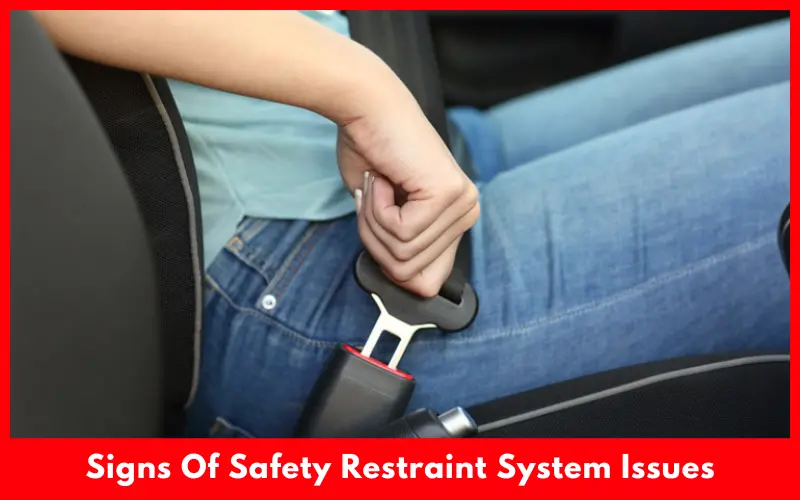
Look for fraying, cuts, or any other signs of wear on the belt fabric. Check if the buckle fits properly and clicks securely into place.
Reasons For Service Safety Restraint System Warning Light
Now, let’s talk about the key reasons behind the issues.
1. A Faulty Clock Spring
The clock spring is located beneath the steering wheel. It serves as a connector for the steering wheel assist systems, including the airbag, horn, and any mounted controls. When a clock spring breaks or becomes damaged, this connection can be hampered.
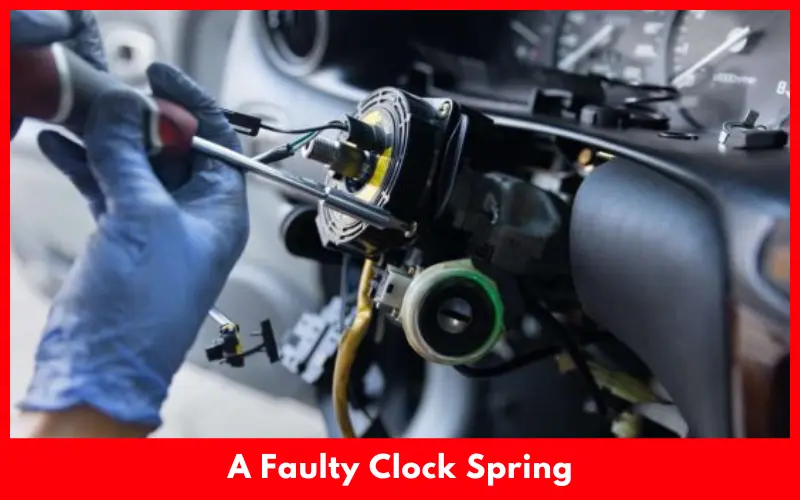
As a result, the airbag may not work properly in the event of a collision which will increase the risk of injury to the driver.
Symptoms of a faulty clock spring include:
- The airbag warning light illuminates the dashboard.
- Loss of horn functionality.
- Non-operational steering wheel lock controls.
2. A Faulty Airbag
Airbags are lifesavers during a collision. They are designed to inflate within milliseconds to provide a cushion between the occupants and your car’s interior.
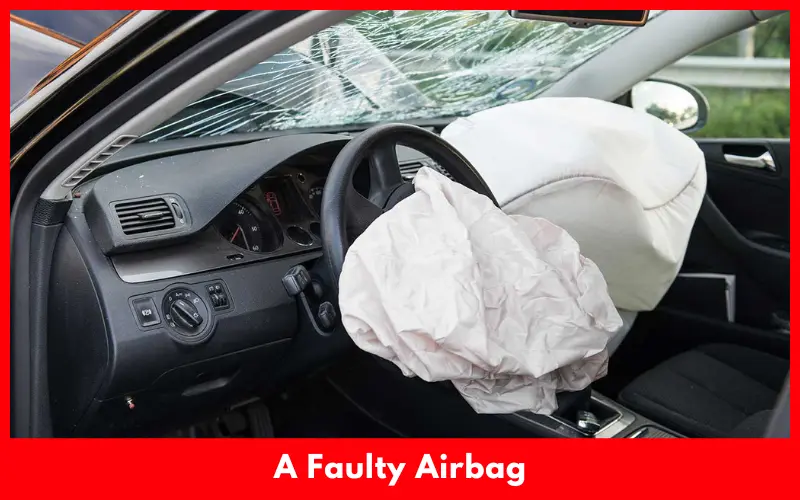
A faulty airbag doesn’t work during an accident. Sometimes, a damaged airbag partially works during an accident. This means it doesn’t fully inflate or does it too slowly to offer the needed protection.
Indicators of a faulty airbag include:
- Persistent airbag warning lights.
- Visible damage to the airbag compartment.
- Recalls issued by the vehicle manufacturer due to identified airbag issues.
3. Bad Airbag Sensor
Airbag sensors detect collisions and trigger airbag operation. A bad sensor may fail to detect a crash or can cause the airbag to work unexpectedly. Causes of sensor failure can include corrosion, impact damage, or electrical failures within the system.
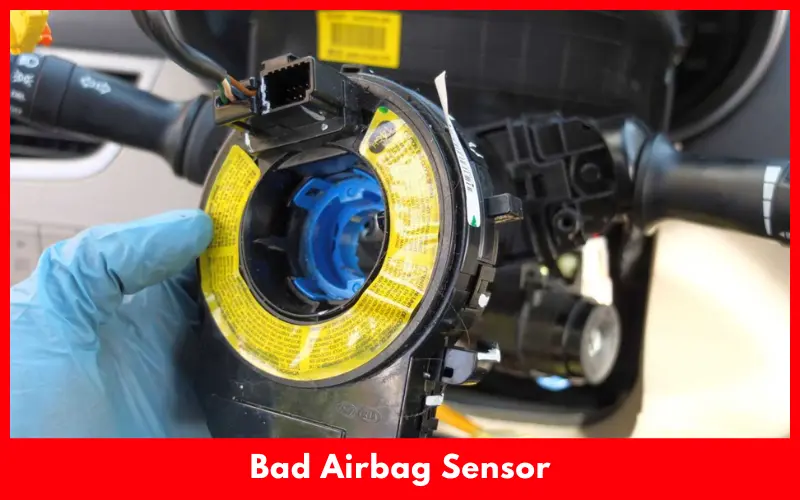
Signs of a bad airbag sensor:
- You’ll notice the activation of the airbag warning light.
- Airbags may not work in some collisions but in minor incidents.
- Specific codes indicate sensor failures.
- Unusual delays in airbag inflation during a collision indicate sensor issues.
4. Wiring Issue
Wiring issues in the safety restraint system can be frayed wires, loose connections, or corrosion. They can interrupt communication between the system’s components. It eventually leads to malfunctions in airbag deployment or warning light errors.
How to detect wiring issues? Look for the signs below:
- You may see flickering or erratic warning lights indicating loose or damaged wiring.
- There can be a loss of electrical functions that are related to the safety restraint system, (e.g. airbags and seatbelt tensioners).
- You also may experience intermittent connectivity issues.There can be visible damage to the wiring as well.
- The wires may show signs of wear, corrosion, or damage.
5. Faulty SRS Computer
The SRS (Supplemental Restraint System) computer controls the entire airbag system. It processes information from various sensors to make deployment decisions during a collision.
A malfunction in the SRS computer can lead to malfunctioning airbags. So, fixing a faulty SRS computer is a must.

How to know there’s a faulty SRS computer? Let’s get the answers:
- The first sign can be the persistent SRS warning light. It indicates a failure in the system’s control unit.
- The inability to clear error codes can be another sign. Although you attempt to reset, error codes related to the SRS computer will persist.
- You’ll experience a malfunctioning control system.
- Failure of System Self-Checks: The vehicle’s self-diagnostic routine indicates control unit issues.
- Unresponsive to Diagnostic Scanning: The SRS computer may not communicate properly with diagnostic tools.
How To Fix Service Safety Restraint System Warning Light?
Once you know the reasons, follow the steps to fix the issues.
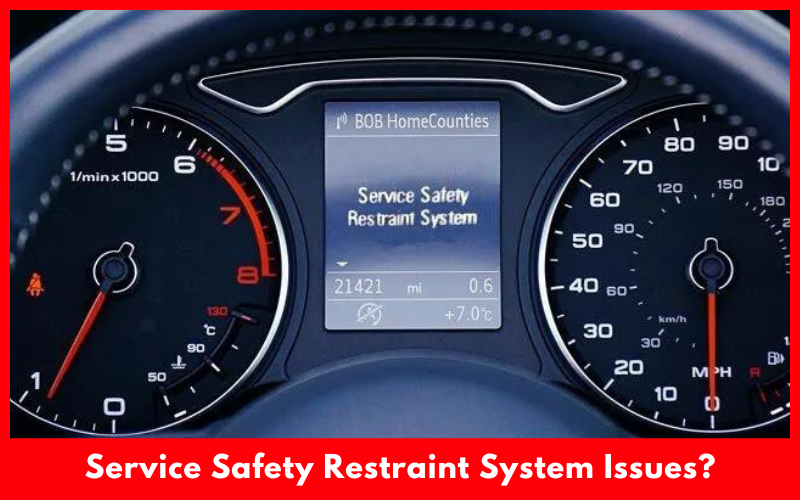
Solution For A Bad Clock Spring
- First, diagnose the issue with specialized equipment such as an OBD-II Scanner and multimeter.
- Carefully remove the steering wheel to access the clock spring.
- Replace the faulty clock spring with a new, high-quality part.
- Reassemble the steering wheel. Make sure that all functions are restored and operational.
Solution For A Faulty Airbag
- Use diagnostic tools ( an airbag diagnostic scanner and a multimeter) to identify the specific reason for the fault.
- Inspect and replace damaged components. The damaged component can be the airbag itself, the sensor, or the wiring.
- Follow the manufacturer’s guidance for replacement.
- Carefully install new components.
Solution For A Bad Airbag Sensor
- You need to diagnose the issue by using diagnostic scanning tools to read error codes.
- Then, you will remove the wiring harness and disconnect the faulty sensor.
- Replace the faulty sensor with a new one. Reassemble everything you detached
Solution For The Wiring issues
- You need to inspect damaged or problematic wiring thoroughly.
- Trim any frayed ends of exposed or frayed wires. Then, just use electrical tape or heat-shrink tubing to insulate the damaged area.
- You must cut out or replace severely damaged wirings.
- Strip the ends of the good wire for the replacement. Install a new section of similar gauge wire, and seal the connection.
Note: The replacement process requires professionalism, so you better seek help for this part.
Solution For A Faulty SRS Computer
- The SRS computer is located beneath the centre console, dashboard, or under the front seats.
- Remove interior components such as trim pieces, the centre console, or other parts of the dashboard.
- Disconnect the computer from car wiring harness and any mounting brackets.
- Get a new SRS computer compatible with your vehicle’s model and install it.
- Reinstall any components that you removed to access the SRS computer.
How To Reset Service Safety Restraint System?- 2 Simple Ways!
Here’s how you can reset the service safety restraint system.
Option 1
- Turn the ignition switch on. Don’t start the engine though.
- Now, you’ll see the service safety restraint system popping up on the dashboard.
- Wait 7-8 seconds for the light to turn off.
- Turn off the ignition. Wait 3 more seconds.
- Repeat this process again.
- Start the engine.
If option one doesn’t work, move on to the two.
Option 2
- Get an OBD-II scanner first. Then, turn off the ignition.
- Plug the OBD-II scanner into the OBD-II port of your car.
- Turn on the ignition without starting the engine.
- Power on the OBD-II scanner. Use the scanner’s menu to get the section related to the safety restraint system.
- The scanner will display any error codes related to the safety restraint system. Read and clear the safety restraint system code.
- This time, the scanner will indicate a successful reset. Verify the error code and disconnect the OBD-II scanner from the port.
How To Prevent Service Safety Restraint System?
Try to follow these preventative tips to avoid service safety restraint system issues in the future.
- Follow the maintenance instructions according to the owner’s manual.
- Avoid DIY repairs on the safety restraint system components if you are not an expert.
- Keep all the softwares updated to improve overall system performance or fix bugs.
- Don’t take dashboard warning lights lightly. These warnings can indicate serious problems, so inspect your car as soon as you notice something suspicious.
- Use OEM (Original Equipment Manufacturer) parts for any replacement to ensure compatibility and reliability.
- Don’t place stickers, covers, or hanging items from the rearview mirror. These can interfere with the system’s functionality.
- Don’t place heavy objects against the seat back.
FAQs
What Does it Mean When The SRS Warning Light Comes On?
It means that there’s something wrong with the airbag system of your car. The airbags may not deploy during an accident which can be dangerous.
How Long Does The SRS Light Stay On?
SRS warning light illuminates for around 6-7 seconds. Then the light should turn off. The reason for the SRS light illumination can be a low battery. Make sure you search for the reason right after you notice the light.
How Can You Turn The SRS Light Off?
Restart your vehicle with the ignition. To start the process, turn the ignition switch. Leave it on for 10-20 seconds. Turn off the ignition switch and start your car. If it doesn’t work for you, get your car checked by a professional.
Final Words
This is all about the service safety restraint system. Now, you know everything about the service safety restraint system.
A faulty SRS system can indicate different issues in your car. You must get your car checked before it’s too late. Faulty SRS computers, airbag sensors, and different wiring issues can create larger issues if unchecked.

